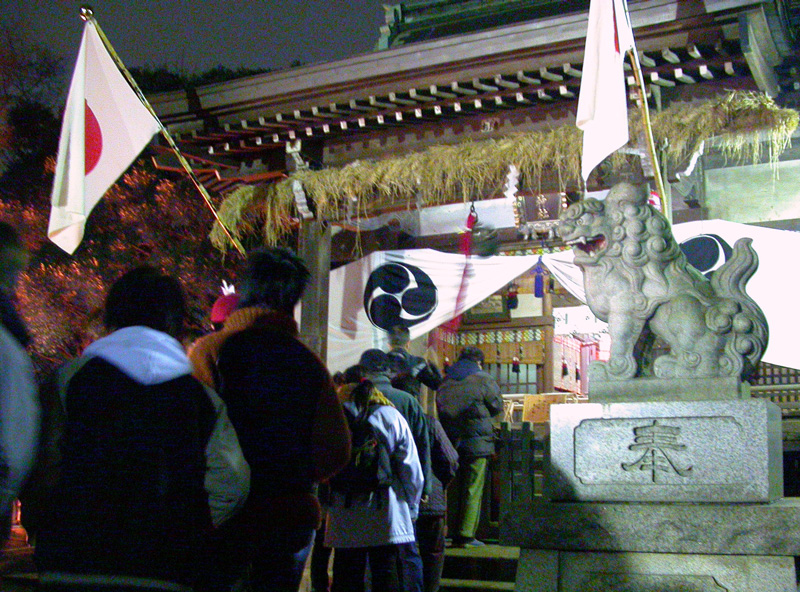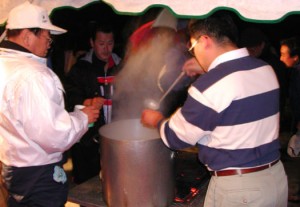
Visiting a shrine on New Year’s Eve. Photo © Ruthy Kanagy.
It’s the last day of December and I’m walking on a road that leads from the village of Akan to the Shinto shrine on top of a hill. Falling snow obscures the footprints of the villagers ahead of me. Snowdrifts line the shores of Lake Akan—the surface of the caldera lake is calm in the deepening dusk. The only contrast in this world of white is the bright red nanakamado berries of the mountain ash.I reach the Torii gate and duck under the hanging white paper strips that mark the sacred precincts. I join a line of people climbing the steep stone steps to the shrine. Parents, children, and grandparents bundled in coats and furry hats rub their hands together to keep warm. Light bulbs strung in tree branches illuminate their shining faces. They have come to pay their respects to the deities who offered protection throughout the year and to pray for good fortune in the coming year.

Ama-zake (sweet sake) served hot on New Year’s Eve. Photo © Ruthy Kanagy.
At the top of the steps, a huge cauldron hangs above an open fire. A pungent white vapor rises from a pot of ama-zake—sweet sake, the traditional drink on New Year’s Eve. In front of the tent, two men ladle the steaming brew into cups. I take a cup and cradle it against my chest. The sweet liquid fills my mouth and warms me inside and out.
At the next tent, a woman is roasting mochi rice cakes on a wire grill. The outsides of the sticky cakes are turning crispy brown. When they puff up in the center like bubblegum, you know that they are ready to eat
“Atsui desu yo—they’re hot!” the woman says as she hands me two squares.
“Arigatoo gozaimasu,” I reply. I dip a corner of the mochi into a dish of savory soy sauce and sugar and take a bite. Mmm, just like I remembered.
The crowd of people inches closer to the main shrine. Coins are tossed into an offering box, and the bell rings as each worshipper tugs on a long rope, letting the deities know of their presence. Adults and children together clap twice, then bow and press their palms together in silent prayers for good health; for success in business; for help finding a job, finding a mate, conceiving a child, giving birth safely, or passing entrance exams.
After making my wishes known to the gods, I climb slowly down the stairs and drift back to the village. Back at the inn, I soak in the hot spring bath until my body is heated to the core. I wrap myself in a yukata and snuggle into my warm futon, dreaming of oshogatsu (New Year’s) and all the special foods that await me in the morning.
